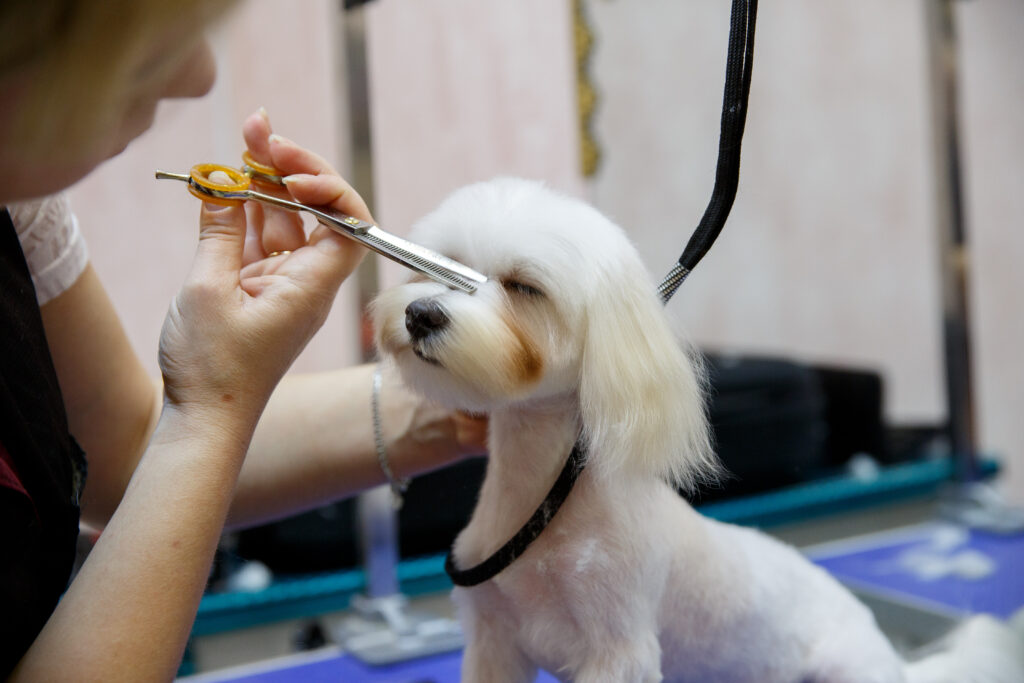Regular grooming is an essential part of responsible pet ownership. It not only helps your furry companion look their best but also plays a vital role in maintaining their overall health and hygiene. From coat care to dental hygiene, grooming encompasses a range of practices that contribute to your pet’s well-being. In this blog, we’ll explore the grooming essentials you need to know to keep your pet happy, healthy, and looking their best.

Brushing:
Regular brushing is crucial for maintaining a healthy coat for both dogs and cats. It helps remove loose fur, prevents matting, and stimulates blood circulation. Choose a brush suitable for your pet’s coat type and brush them gently, ensuring you reach all areas. Brushing is not only beneficial for their coat but also a great opportunity for bonding.
Bathing:
Bathing requirements vary depending on your pet’s breed and activity level. Use a pet-friendly shampoo and follow the recommended bathing frequency. Over-bathing can strip their coat of natural oils, leading to dryness. After the bath, dry them thoroughly to prevent skin irritations. If your pet dislikes baths, consider using dry shampoos or seeking professional grooming services.
Nail Care:
Trimming your pet’s nails is essential to prevent overgrowth, which can lead to discomfort and difficulty walking. Invest in quality nail clippers or consider using a grinding tool to safely trim the nails. Be cautious not to cut too close to the quick, which can cause bleeding. If you’re unsure or uncomfortable doing it yourself, consult a professional groomer or your veterinarian.
Dental Hygiene:
Oral health is vital for your pet’s overall well-being. Regularly brush their teeth using pet-safe toothpaste and a toothbrush designed for pets. Dental chews and toys can also help remove plaque and freshen their breath. Schedule professional dental cleanings as recommended by your veterinarian to maintain optimal dental hygiene.
Ear Care:
Check your pet’s ears regularly for signs of infection, redness, or discharge. Clean their ears using a pet-approved ear cleaner and cotton balls or pads. Gently wipe the outer part of the ear, avoiding insertion into the ear canal. If you notice any abnormalities, consult your veterinarian for proper diagnosis and treatment.
Eye Care:
Keep your pet’s eyes clean and free from discharge by gently wiping the area with a damp cloth or using pet-safe eye wipes. Look out for excessive tearing, redness, or any signs of irritation. If you notice persistent issues, consult your veterinarian to rule out any underlying conditions.
Anal Gland Expression:
Some pets may require occasional anal gland expression to prevent discomfort or infection. If you notice your pet excessively licking or scooting their bottom on the ground, it may indicate an issue with their anal glands. Consult a professional groomer or your veterinarian to safely express the glands if needed.
Regular Veterinary Check-ups:
While grooming at home is important, regular veterinary check-ups are equally crucial for your pet’s overall health. Your veterinarian can perform a thorough examination, address any grooming concerns, and provide professional advice tailored to your pet’s specific needs.
Conclusion:
Maintaining your pet’s health and hygiene through regular grooming practices is a fundamental aspect of responsible pet care. By incorporating these grooming essentials into your routine, you can promote your pet’s well-being, prevent potential health issues, and strengthen the bond between you and your furry friend. Remember, grooming is not just about appearances; it is an essential part of keeping your pet happy, comfortable, and healthy throughout their lives.
